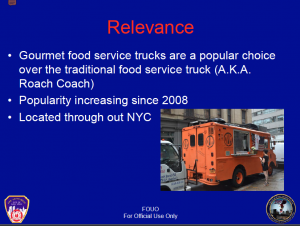NSA Propagandist John Schindler Suggests Boston Marathon Terrorist Attack Not “Major Jihadist Attack”
NSA propagandist John Schindler has used the San Bernardino attack as an opportunity to blame Edward Snowden for the spy world’s diminished effectiveness, again.
Perhaps the most interesting detail in his column is his claim that 80% of thwarted attacks come from an NSA SIGINT hit.
Something like eighty percent of disrupted terrorism cases in the United States begin with a SIGINT “hit” by NSA.
That’s mighty curious, given that defendants in these cases aren’t getting notice of such SIGINT hits, as required by law, as ACLU’s Patrick Toomey reminded just last week. Indeed, the claim is wholly inconsistent with the claims FBI made when it tried to claim the dragnet was effective after the Snowden leaks, and inconsistent with PCLOB’s findings that the FBI generally finds such intelligence on its own. Whatever. I’m sure the discrepancy is one Schindler will be able to explain to defense attorneys when they subpoena him to explain the claim.
Then there’s Schindler’s entirely illogical claim that the shut-down of the phone dragnet just days before the attack might have helped to prevent it.
The recent Congressionally-mandated halt on NSA holding phone call information, so-called metadata, has harmed counterterrorism, though to what extent remains unclear. FBI Director James Comey has stated, “We don’t know yet” whether the curtailing of NSA’s metadata program, which went into effect just days before the San Bernardino attack, would have made a difference. Anti-intelligence activists have predictably said it’s irrelevant, while some on the Right have made opposite claims. The latter have overstated their case but are closer to the truth.
As Mike Lee patiently got Jim Comey to admit last week, if the Section 215 phone dragnet (as opposed to the EO 12333 phone dragnet, which remains in place) was going to prevent this attack, it would have.
Schindler then made an error that obscures one of the many ways the new phone dragnet will be better suited to counterterrorism. Echoing a right wing complaint that the government doesn’t currently review social media accounts as part of the visa process, he claimed “Tashfeen Malik’s social media writings [supporting jihad] could have been easily found.” Yet at least according to ABC, it would not have been so easy. “Officials said that because Malik used a pseudonym in her online messages, it is not clear that her support for terror groups would have become known even if the U.S. conducted a full review of her online traffic.” [See update.] Indeed, authorities found the Facebook post where Malik claimed allegiance to ISIS by correlating her known email with her then unknown alias on Facebook. NSA’s new phone program, because it asks providers for “connections” as well as “contacts,” is far more likely to identify multiple identities that get linked by providers than the old program (though it is less likely to correlate burner identities via bulk analysis).
Really, though, whether or not the dragnet could have prevented San Bernardino which, as far as is evident, was carried out with no international coordination, is sort of a meaningless measure of NSA’s spying. To suggest you’re going to get useful SIGINT about a couple who, after all lived together and therefore didn’t need to use electronic communications devices to plot, is silliness. A number of recent terrorist attacks have been planned by family members, including one cell of the Paris attack and the Charlie Hebdo attack, and you’re far less likely to get SIGINT from people who live together.
Which brings me to the most amazing part of Schindler’s piece. He argues that Americans have developed a sense of security in recent years (he of course ignores right wing terrorism and other gun violence) because “the NSA-FBI combination had a near-perfect track record of cutting short major jihadist attacks on Americans at home since late 2001.” Here’s how he makes that claim.
Making matters worse, most Americans felt reasonably safe from the threat of domestic jihadism in recent years, despite repeated warnings about the rise of the Islamic State and terrible attacks like the recent mass-casualty atrocity in Paris. Although the November 2009 Fort Hood massacre, perpetrated by Army Major Nidal Hasan, killed thirteen, it happened within the confines of a military base and did not involve the general public.
Two months before that, authorities rolled up a major jihadist cell in the New York City area that was plotting complex attacks that would have rivalled the 2005 London 7/7 atrocity in scope and lethality. That plot was backed by Al-Qa’ida Central in Pakistan and might have changed the debate on terrorism in the United States, but it was happily halted before execution – “left of boom” as counterterrorism professionals put it.
Jumping from the 2009 attacks (and skipping the 2009 Undiebomb and 2010 Faisal Shahzad attempts) to the Paris attack allows him to suggest any failure to find recent plots derives from Snowden’s leaks, which first started in June 2013.
However, the effectiveness of the NSA-FBI counterterrorism team has begun to erode in the last couple years, thanks in no small part to the work of such journalists-cum-activists. Since June 2013, when the former NSA IT contactor [sic] Edward Snowden defected to Moscow, leaking the biggest trove of classified material in all intelligence history, American SIGINT has been subjected to unprecedented criticism and scrutiny.
There is, of course, one enormous thing missing from Schindler’s narrative of NSA perfection: the Boston Marathon attack, committed months before the first Snowden disclosures became public. Indeed, even though the NSA was bizarrely not included in a post-Marathon Inspector General review of how the brothers got missed, it turns out NSA did have intelligence on them (Tamerlan Tsarnaev was in international contact with known extremists and also downloaded AQAP’s Inspire magazine repeatedly). Only, that intelligence got missed, even with the multiple warnings from FSB about Tamerlan.
Perhaps Schindler thinks that Snowden retroactively caused the NSA to overlook the intelligence on Tamerlan Tsarnaev? Perhaps Schindler doesn’t consider an attack that killed 3 and injured 260 people a “major jihadist attack”?
It’s very confusing, because I thought the Boston attack was a major terrorist attack, but I guess right wing propagandists trying to score points out of tragedy can ignore such things if it will spoil their tale of perfection.
Update: LAT reports that Malik’s Facebook posts were also private, on top of being written under a pseudonym. Oh, and also in Urdu, a language the NSA has too few translators in. The NSA (but definitely not the State Department) does have the ability to 1) correlate IDs to identify pseudonyms, 2) require providers to turn over private messages — they could use PRISM and 3) translate Urdu to English. But this would be very resources intensive and as soon as State made it a visa requirement, anyone trying to could probably thwart the correlation process.


